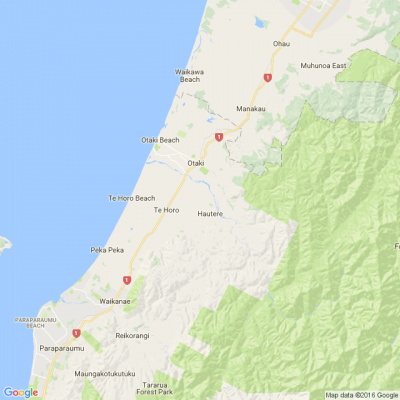Strategies For Climate Change
KCDC needs to revise its ambulance at the bottom of the cliff approach to climate change. Instead of reminding us what we need to have in a grab bag, timely attention should be given to adaptations to our existing infrastructure to enable it to cope with the severe weather events which are inevitably coming.
Chris Turver has recently recommended that the current Floodplain Management Plan be revised, and I would concur that this should be done. However, the work should not stop there. These management plan exercises are in danger of becoming tick-box exercises and are often consigned to the bottom draw to accumulate dust once they are signed off. Any strategies we use now have to be living documents. Our lives will depend upon it.
We also need to adapt existing infrastructure outside of flood plain areas to cope with extreme runoff. Parks and reserves can be re-designed to capture water in heavy rain events. Roads can be cambered to direct water to outflow areas. Landscaping and public recreation areas need to be made more permeable, to absorb water rather than turn into raging torrents across kilometers of concrete. The Waikanae River needs to have gravel removed as a matter of urgency. This could benefit the community in a number of ways. The gravel can be distributed for permeable paths, communities could have water holes constructed for recreational use.
For those who would like to understand more about these concepts, Mathew Bradbury's recent publication "Water City: Practical Strategies for Climate Change" is a valuable resource. Its available on Amazon. Katherine Ryan also interviewed Mathew on RNZ last week and this is available on the RNZ website. The strategies he advises and the evidence for these is compelling.
We not only need to "build back better", we need better existing structures also. The word is out from gardeners, landscapers and lifestyle block owners alike, that adding mulch and compost to soils absorbs water and slows down water flows. The more we can add to our soils the better. Twig mulch and bark paths are more absorbent than concrete.
The old slash and burn methods of agriculture are no longer appropriate. We should be utilizing forestry slash to provide more permeable surfaces, rather than burning it. These large scale burn offs add a lot more Co2. KCDC could help the Hawkes Bay Council by removing a few truckloads of chipped slash and providing it for local users here. Funding could also be allocated to individuals to improve water capture through tanks, swales and ponds.These strategies are, in my view, more deserving of funding than some of the current decisions that have been made. Storytelling is nice to have, but we don't want to have to tell the stories of how our families did not survive the winter of 2023 flood.

Scam Alert: Fake information regarding December Bonuses from MSD
The Ministry of Social Development is reporting that fake information is circulating about new ‘December bonuses’ or ‘benefit increases’
If you get suspicious communication, please contact Netsafe.

Driven On The Akatarawa Rd Lately?
If so, its good to know you are still alive and reading this.
We have a function to go to over Christmas up that way and having heard a few hairy stories about the road, I went up there on Thursday to check it out. The road's ok, narrow and winding, but not much worse than a Wellington hill suburb. What was pretty scary was the behavior of other drivers. Three vehicles heading the other way at speed would have crashed into me if I hadn't been pulled off the road. I had pulled in to check the address when a truck came flying past, taking up all of the narrow road at speed. There is no way the driver would have been able to stop had they come around the corner immediately in front of me. The other two drivers came hurtling past as I had turned in to turn around and come back down the hill. They were also driving at speed and taking up most of the road. Coming back down I passed another car coming up and estimate that the safe speed to pass another car was about 30-35 kms.p.h. So, now we're thinking, do we go to the function or not.? Feels a bit like we're taking our life in our hands going up there. Drivers appear to be overconfident, and they are courting serious injury.








 Loading…
Loading…